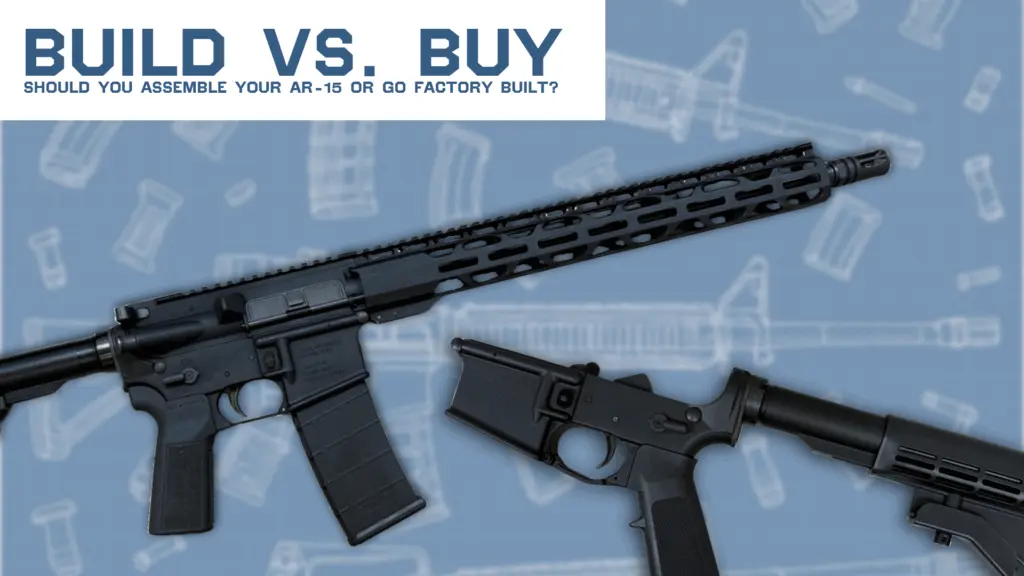
Choosing between building your own AR-15 and buying a factory-built rifle is a classic conundrum. If you’re a first-time gun buyer or even a moderately knowledgeable shooter, you’ve probably caught yourself Googling build vs buy AR-15 or asking should I build or buy an AR-15? Don’t worry – you’re not alone. The AR-15’s modular nature has earned it nicknames like “adult Legos” because you can mix and match parts to build a rifle uniquely your own. But does that mean you should roll up your sleeves and assemble one from scratch? Or is it wiser to snag a complete rifle off the shelf?
In this blog, we’ll break down the pros and cons of building an AR-15 vs. buying one. We’ll cover cost, customization, performance, legal stuff, warranty/support, and yes – the all-important pride of ownership. Along the way, we’ll drop some examples of popular brands (from Xtreme Tactical Sports to Aero Precision, Radical Firearms, and American Tactical Imports) to help illustrate the points. By the end, you’ll have a clear idea which route fits you best. Let’s lock and load!
Cost: Counting the Dollars and “Sense”
One big factor in the build vs. buy decision is cost. So, which route is easier on the wallet? The answer: it depends. Here’s the breakdown:
- Building – Potential Savings: If you play your cards right, assembling your own AR-15 can save you money. By sourcing individual parts on sale or choosing budget-friendly components, you might build a rifle with features you want at a lower total cost than an equivalent factory model. For example, you could snag an Aero Precision stripped lower on sale, grab an Xtreme Tactical Sports (XTS) parts kit for a bargain, and slowly acquire the other bits as deals pop up. This piecemeal approach can be easier on cash flow – you’re not dropping a lump sum all at once. Plus, no paying for features you don’t need. However, note that cost savings aren’t guaranteed – if you go for high-end components or need to buy tools, the budget can balloon quickly.
- Buying – Upfront Price for Convenience: Going factory-built often means a higher initial price tag, but you’re paying for convenience and peace of mind. A complete rifle’s price includes the manufacturer’s assembly labor, quality testing, warranty, and maybe a bit of brand premium. For instance, a ready-to-shoot AR from a reputable brand might cost a bit more than a DIY parts build of similar specs. On the flip side, entry-level AR-15s have become very affordable in recent years. Brands like Radical Firearms or American Tactical Imports (ATI) offer models that hover around the $500 mark, which is hard to beat. (ATI’s Alpha-15 rifle, for example, comes with a lightweight free-float handguard and flip-up sights for roughly $499. The convenience of buying means you get everything in one package – but you might spend a few extra bucks for that “open box, insert magazine, pew-pew” instant gratification.
TL;DR on cost: Building can be cost-effective if you’re patient and savvy about hunting for deals or only want specific features. Buying off-the-rack is quicker but often costs a bit more upfront. If you’re on a tight budget and not picky, a factory basic model (like a Radical Firearms or ATI rifle) could actually be cheaper than a custom build with premium parts. Always compare the total build sheet price vs. store price before you decide.
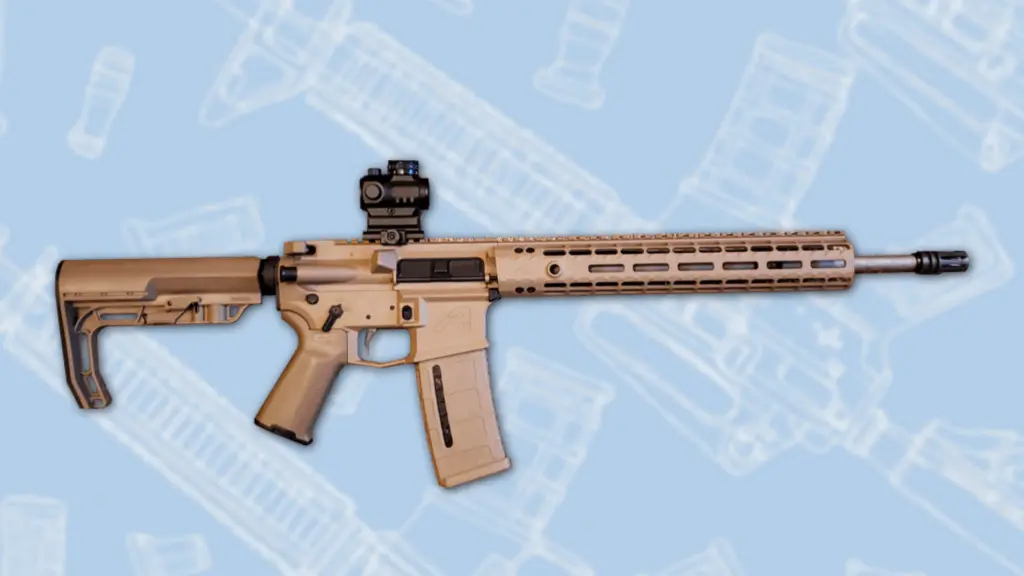
Customization: Your Rifle, Your Way
Customization is the AR-15’s calling card. This rifle is famous for its versatility – you can swap everything from the stock and grip to the barrel and handguard. Here’s how the build vs. buy choice affects your ability to personalize:
- Building – Unlimited Personalization: When you build an AR-15, you’re effectively the chef of your rifle recipe. Want a pink anodized trigger guard and matching takedown pins? Go for it. Prefer a competition-grade trigger, a specific barrel length, or a unique caliber? No problem. Building your own AR allows you to customize every aspect to your liking You choose each component – the exact stock that fits your shoulder, the rail that matches your hand size, the optics and sights that align with your goals. The result is a firearm that’s tailor-made for you. In fact, the AR’s customizability is so high that enthusiasts literally refer to it as “Adult Legos” – you’re assembling pieces to create your dream rifle. Brands like Aero Precision are popular among builders for their high-quality mil-spec receivers and parts (trusted for their tight tolerances and reliability), while Xtreme Tactical Sports (XTS) offers innovative and budget-friendly components to give your build some personal flair. If making a rifle uniquely yours is the goal, the DIY route wins hands down.
- Buying – Some Options, Then Upgrade Later: Buying a factory AR-15 doesn’t mean you’re stuck with a cookie-cutter rifle forever – but your customization is limited at the time of purchase. Manufacturers offer different models with various stock furniture or colors, but you might not find exactly the combination you envision. You basically pick a rifle that’s closest to what you want, and if you crave changes, you’ll be swapping parts afterwards. Many off-the-shelf ARs come with pretty basic components to keep prices down (think mil-spec triggers that can feel gritty, generic handguards, and plain stocks). Upgrading those parts later is always possible – the AR-15 platform is standardized, so you can replace almost anything – but that means spending more money on top of the rifle’s purchase price. In short, a factory rifle is like a plain pizza: it’s totally serviceable as-is, and you can add your own toppings later. Building from scratch is like ordering à la carte from the start, extra pineapple and all.
Bottom line on customization: If you have a very specific vision or just love tweaking every detail, building gives you unparalleled freedom. You’re not too picky initially or don’t mind modding later, buying a complete AR works too – you can always customize gradually. Just remember, any part you swap on a bought rifle is basically paying twice (buying the rifle and the new part), whereas building lets you allocate your budget to exactly the parts you want from day one.
Performance & Reliability Build vs Buy AR-15
What about how the rifle actually shoots? Does a DIY build perform better or worse than a factory gun? Several factors come into play:
- Building – Performance is in Your Hands With a custom AR-15 build, you control the performance. Want tighter groups? Choose a match-grade barrel. Prefer a smoother trigger pull? Pick a polished trigger. You can fine-tune your setup with an adjustable gas system or high-quality parts from brands like Aero Precision. Done right, a well-built AR can outperform many factory rifles. But that performance depends on your skill—assembly mistakes can lead to gas leaks, feeding issues, or loose components. As they say, “The gun is only as good as the builder.” Nail the build, and you’ll have a rifle that runs like a dream.
- Buying – Ready, Tested, and Reliable A factory-built AR-15 is usually test-fired and quality-checked before it hits the shelf, so you can expect it to work right out of the box. That’s a big advantage for new shooters or anyone who doesn’t want to troubleshoot builds. If there’s an issue, it’s likely on the manufacturer—not your assembly. Most stock ARs meet mil-spec or close, offering solid performance for home defense or range use. While factory rifles might not have premium triggers or barrels, they’re dependable. Budget brands like Radical Firearms or ATI focus on affordability and function—and many models come with lifetime warranties.
In a nutshell on performance: A factory AR-15 offers reliable, tested performance right away – an important consideration if you need the rifle to just work with no fuss. A custom build can potentially surpass it in specific performance areas (accuracy, ergonomics, etc.), but that depends on your part selection and build quality. Beginners might not notice huge performance differences either way for casual use. If you’re a tinkerer aiming for top-tier accuracy or a very tuned rifle, building lets you chase that dragon. If you value out-of-the-box reliability and don’t need to squeeze out the last drop of performance, a factory build keeps it simple and consistent.
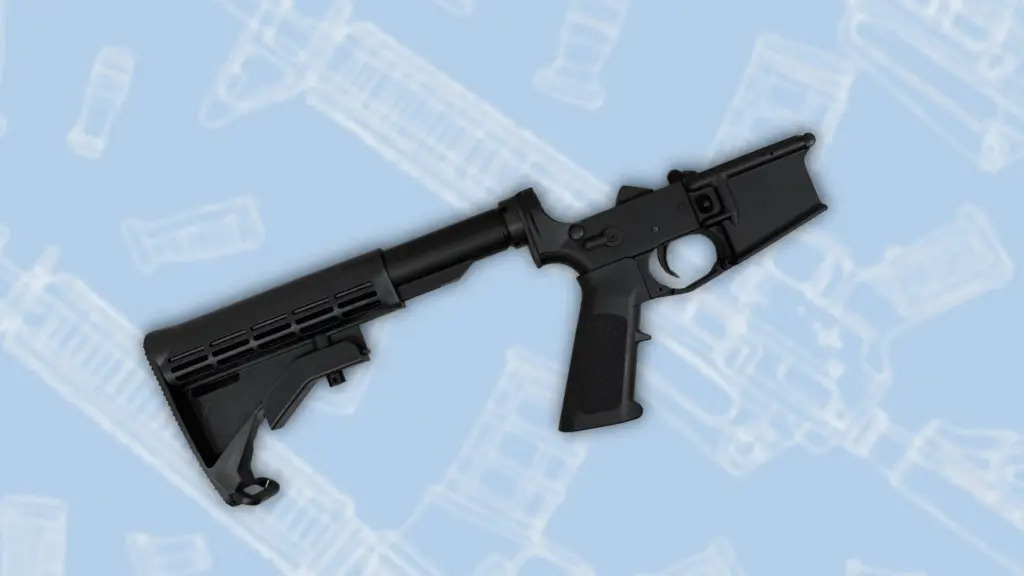
Legal Considerations
Let’s talk legal stuff – because nothing kills the joy of a new rifle like finding out you ran afoul of gun laws. The laws can vary by country and state, but we’ll focus on the U.S. context here:
- Building an AR-15 (Legally) In the U.S., it’s generally legal to build your own AR-15 for personal use—no license needed, as long as you’re not prohibited from owning firearms and don’t plan to sell it. The lower receiver is the key part legally considered the firearm, so buying a stripped lower still requires a background check through an FFL. Other parts can be bought online without restrictions. Some builders choose 80% lowers to avoid registration, but that comes with legal gray areas, especially in states with ghost gun laws. Speaking of states, places like California and New York have specific rules on rifle features and configurations, so your DIY build must still follow those laws. Building an AR pistol or SBR? Expect extra paperwork and ATF requirements. Bottom line: building is legal—but only if you know and follow all federal and local regulations.
- Buying an AR-15 (Legally)
Buying a factory AR-15 is usually simple: choose your rifle, fill out the ATF 4473 form, pass a background check, and take it home—assuming your state doesn’t have extra restrictions. One benefit of buying from a licensed dealer is peace of mind; they’ll only sell rifles that comply with local laws, and manufacturers design with legal compliance in mind. Just be sure to check your local rules—some areas require fixed stocks or mag limits. Buying from a dealer also means your purchase is on record, which is standard but may matter to privacy-minded folks.
Legal bottom line: Both building and buying are legal paths to AR ownership in the U.S., but building requires a bit more legal homework on your part. You must ensure you follow federal law (e.g. use a serialized lower or legally build an 80%, don’t build with intent to sell, avoid making an unregistered SBR, etc.) and comply with state-specific restrictions. Buying is more plug-and-play legally – the gun comes ready to go, and the dealer will handle the necessary background check and ensure the model is compliant for sale in your area. Either way, always stay updated on current laws. When in doubt, consult local regulations or an expert – because orange jumpsuits and federal charges are not a good look on any gun enthusiast.
Warranty & Support: YOYO or Safety Net?
“Warranty? We don’t need no stinkin’ warranty!” – If that’s not your motto, pay attention. The level of after-purchase support you get is very different between building vs buying:
- Building – You’re On Your Own (Mostly)
When you build your own AR-15, you become the manufacturer—meaning no full rifle warranty and no tech support hotline. If something doesn’t work right, it’s on you to troubleshoot and fix it. While individual parts may have warranties from brands like Aero Precision or XTS, you’ll need to identify the faulty component and handle each claim separately. For beginners, that often means turning to YouTube, forums, or that one friend who “swears his builds always run flawless.” The DIY route is rewarding, but it comes with extra responsibility, potential frustration, and out-of-pocket costs if something goes wrong. - Buying a factory AR-15 means you get more than just a rifle—you get a warranty, customer support, and peace of mind. Brands like Radical Firearms even offer lifetime warranties, making it a solid choice for beginners. If something goes wrong, the company handles it, often at no cost. Plus, rifles from reputable manufacturers go through quality control and test firing, so issues are less likely to begin with. Buying from a local shop can also mean added support from in-house gunsmiths. And if you ever want to sell, factory-built rifles tend to hold better value and inspire more trust than DIY builds.
Wrap on warranty/support: Are you a confident DIYer who doesn’t mind being your own support department? If yes, the lack of a blanket warranty on a build might not faze you – it’s part of the adventure. But if you sleep better at night knowing you can call the manufacturer or send the rifle in for service if something goes wrong, buying wins here. As one gun forum dweller succinctly put it, “If it breaks, you fix it” for builds, versus “if it breaks, they fix it” for buys. Consider how much that safety net is worth to you.
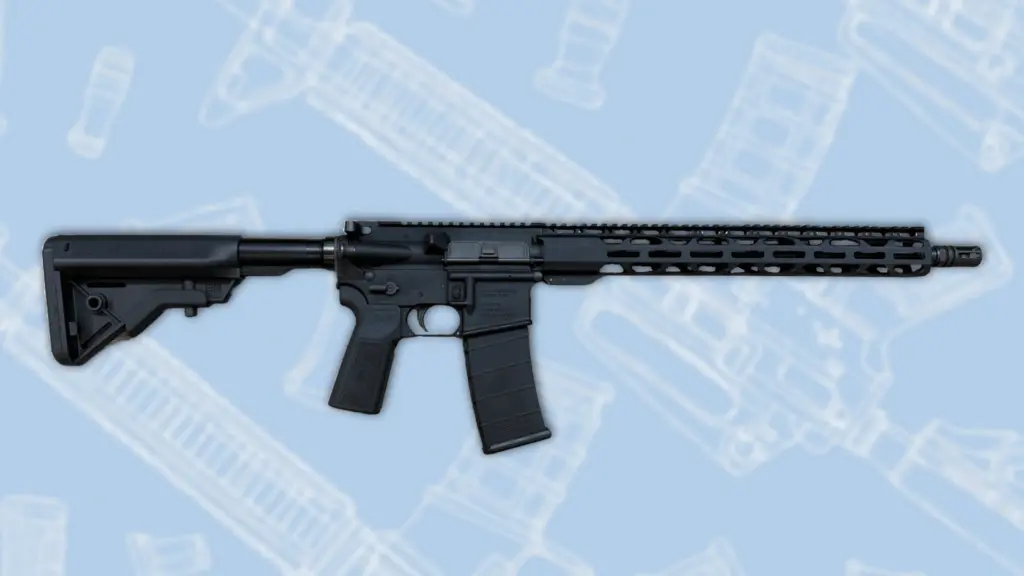
Pride of Ownership: Bragging Rights and Joy
Finally, let’s talk about the feel-good factor. Gun ownership isn’t just about logic and specs – it’s also about what makes you happy and proud when you open your safe or show off at the range.
- Building – “I Made This!”
There’s something special about building your own AR-15. It’s not just a gun—it’s your project, your creation. Every part you picked, every pin you pushed in, adds to the personal story behind it. When someone compliments it at the range, you get to say, “Thanks, I built it.” That pride hits different. Plus, building one gives you a deep understanding of how it works—making you a more confident shooter and problem-solver. And if you’re the hands-on type, the build itself can be just as fun as pulling the trigger. - Buying – Pride in Ownership (Without the Sweat)
Buying an AR-15 off the shelf can still bring a ton of pride. You researched, picked the right model, and made it yours—even if you didn’t build it from scratch. Pride might come from how well you shoot it, how you customize it, or even from owning something rare or limited-edition. Sure, it’s not the same as assembling it yourself, but not everyone wants to be a builder. If your AR is a tool for defense, sport, or fun, owning a well-chosen, quality rifle is still something to be proud of. And with some upgrades—new stock, optics, a slick Cerakote job—it can still feel like your own unique setup.
On pride and joy: This one’s highly subjective. If you’re the type who loves building models, working on cars, or other hands-on hobbies, you’ll likely get a huge kick out of building your AR and an enduring pride each time you use it. If you’re more results-oriented and just want a rifle to shoot without the fuss, you may derive your enjoyment from using the AR-15 rather than assembling it. Neither is wrong – it’s all about what makes your heart happy. Just remember, whether you build it or buy it, it’s your AR-15 in the end, and you have the right to be proud of it either way!
Best AR-15 Brands for Beginners (Examples)
What about brands? Beginners often wonder which names to trust for AR-15s or parts. Here are a few top brands popular with first-timers – whether you plan to build or buy:
- Aero Precision (Builders’ Favorite): Aero Precision is renowned for its high-quality AR-15 parts and receivers. They’ve “earned the trust” of many DIY builders by consistently delivering reliable, precision-machined components that fit together perfectly. If you want a solid foundation for a build, Aero’s uppers and lowers are a great starting point. (They also offer complete rifles, bridging both build/buy worlds.)
- Xtreme Tactical Sports (XTS): XTS produces a wide range of AR components and accessories that are known for innovative designs, durability, and affordabiable. They’re a go-to for budget-conscious builders who still want cool features – like anodized accent kits to give your rifle some personality. Since hitting the market around 2008, XTS has built a reputation for cost-effective, quality parts backed by generous warranties, making them beginner-friendly for assembly projects.
- Radical Firearms: On the factory rifle side, Radical Firearms is a Texas-based manufacturer famous for offering a lot of bang for your buck. Their RF-15 line of AR-15s is often recommended as a top budget AR-15 for first-time owners. Why? They deliver a reliable, no-frills rifle at a very competitive price, and even include a lifetime warranty on their products. That combo of affordability and guarantee makes Radical Firearms rifles especially appealing to newbies who want a ready-to-go option without breaking the bank.
- American Tactical Imports (ATI): ATI is another brand catering to entry-level AR-15 buyers with affordable models. Notably, ATI isn’t afraid to experiment with materials to cut weight and cost – their Omni Hybrid and Alpha-15 rifles use polymer receivers to shave pounds and dollars. The Alpha-15, for example, packs features like a free-float handguard and flip-up sights into a rifle that’s only 5.5 lbs and roughly $499 new. That’s an attractive package for a beginner. While some of ATI’s ultra-budget designs (like polymer lowers) have gotten mixed reviews in terms of long-term durability, they undoubtedly offer one of the most accessible price points for getting an AR-15 in your hands. For a starter rifle that you can always upgrade later, ATI is a brand to consider.
Of course, there are many other great AR-15 brands out there (Smith & Wesson’s M&P15, Palmetto State Armory, Ruger, etc.), but the ones above are frequently mentioned as best for beginners because they balance quality and cost, and have a supportive community of users. Whether you’re piecing together parts or picking a complete gun, it helps to stick with known brands that have good customer feedback.
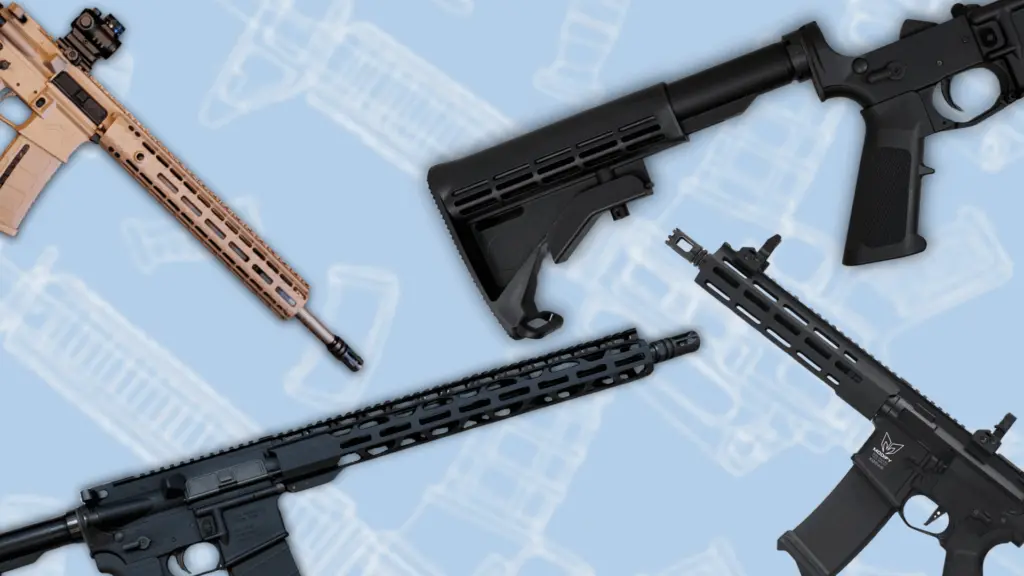
Conclusion: Lock, Stock, and Barrel – It’s Your Call build vs buy AR-15
So, build or buy? By now you’ve seen there’s no one-size-fits-all answer. It truly comes down to your priorities and personality:
- If you relish the idea of a custom project, want to learn every nook and cranny of the AR-15, and don’t mind investing time (and maybe a few curse words along the way 😅), then building your AR-15 can be an incredibly rewarding journey. You’ll end up with a rifle that’s uniquely yours, and the knowledge to troubleshoot or upgrade it with confidence. The pride of saying “I built this” is the cherry on top.
- If you’d rather skip straight to the shooting part, value a warranty and support, or simply aren’t interested in playing gunsmith, then buying a factory-built AR-15 is a perfectly valid (and often wise) choice. You get a rifle that’s been professionally assembled, tested, and ready to rock out-of-the-box. You can always customize it later as you get more comfortable.
At the end of the day, neither option is wrong. Many enthusiasts eventually do both in their shooting lifetime – perhaps buying a starter rifle now and building a custom one down the road when they have more experience and confidence. The AR-15 platform is about freedom: freedom to configure, to experiment, and to tailor your firearm to your needs. Whether you assemble your AR or acquire it whole, what matters is that it fits you and you enjoy it responsibly.
Ready to make your decision? Whichever path you choose, welcome to the club of AR-15 owners! Now go forth, have fun, and remember – the most important part is safety and training. Get out to the range, practice, and make the most of your new rifle. And if this guide helped you, or you have your own build vs. buy war stories, drop a comment and share! Happy shooting, and may your groups be tight and your budget on target.






